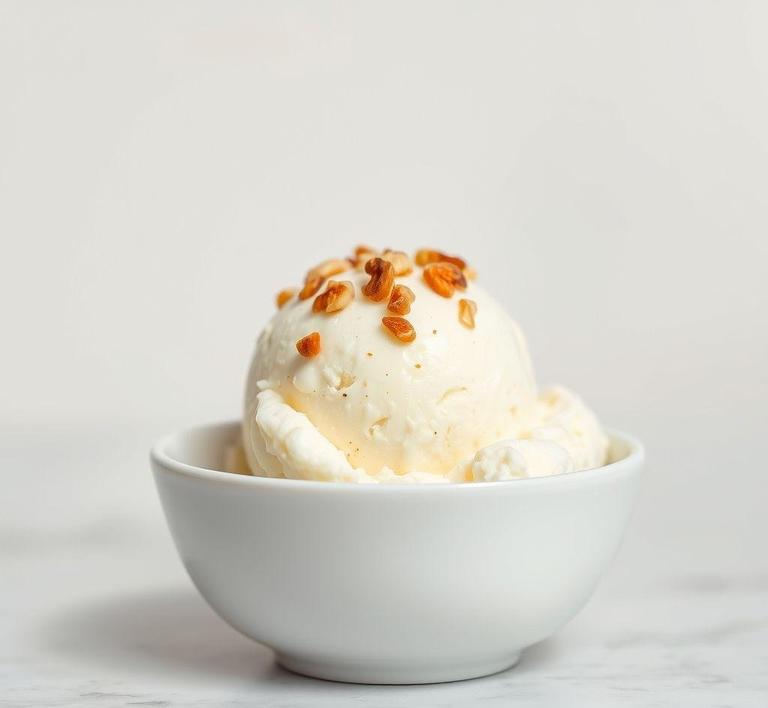If you’ve ever made coconut milk ice cream or have some leftover, you may be wondering whether it’s safe to refreeze it and how to do so without losing its creamy texture and flavor. Refreezing coconut milk ice cream is totally possible, but there are a few things to keep in mind to make sure it doesn’t turn into a frozen block of ice. In this guide, we’ll explore the best methods for properly refreezing coconut milk ice cream, how to avoid texture issues, and tips for storing it so that it stays as delicious as when you first made it. So, let’s dig into the do’s and don’ts of refreezing your favorite dairy-free treat!
Can You Refreeze Coconut Milk Ice Cream?

Coconut milk ice cream is a rich, creamy alternative to traditional dairy ice cream, beloved for its smooth texture and delicious flavor. Whether you’ve got leftovers from a half-finished pint or you’re simply trying to store a batch for later, the question arises: can you refreeze coconut milk ice cream?
The short answer is yes, you can refreeze coconut milk ice cream. However, this comes with some important caveats. Like all frozen desserts, the process of freezing and refreezing can alter the texture and flavor of coconut milk ice cream. Because it lacks the stabilizers and emulsifiers often found in dairy-based ice creams, coconut milk ice cream tends to have a naturally softer consistency. This softness, which makes it particularly delightful when fresh, is more susceptible to the changes that occur with temperature fluctuations. If the ice cream is left to thaw and then refrozen, the delicate structure of the coconut fat and water in the ice cream may not come back together the same way, leading to changes in texture and quality.
To make the refreezing process work in your favor, it’s important to understand the mechanics behind freezing coconut milk ice cream, and how to handle it properly to minimize these changes.
How To Refreeze Coconut Milk Ice Cream?
Refreezing coconut milk ice cream is not a complicated process, but it requires some attention to detail to ensure that you’re not sacrificing too much quality. Here’s how to do it:
-
Avoid Partial Thawing
When you initially open the carton, only scoop out the amount you plan to use. Leaving the container open and exposed to warm air will cause the ice cream to thaw unevenly. Thawing and then refreezing can result in the formation of ice crystals, which can alter the texture. If you are storing a batch for later, avoid letting it thaw too much before placing it back in the freezer.
-
Seal Properly
If you have leftovers, it’s essential to seal the ice cream properly before placing it back in the freezer. Exposure to air leads to freezer burn, which will negatively affect the texture and taste. Ideally, press a layer of plastic wrap or wax paper directly on the surface of the ice cream before sealing it with the original lid. This minimizes the amount of air in contact with the ice cream and helps prevent the formation of ice crystals.
-
Set the Temperature
Make sure your freezer is set to the proper temperature. Ice cream is best stored at a temperature of around -20°F (-29°C). If your freezer fluctuates between temperatures, you may notice a softer, less stable texture after refreezing. The more stable and consistently cold the environment, the better the texture of the refrozen ice cream will be.
-
Use Small Portions
If you’re dealing with a larger quantity of coconut milk ice cream, consider dividing it into smaller portions before freezing. Smaller portions freeze and refreeze more effectively and have a lower chance of developing ice crystals.
-
Handle with Care
When serving the refrozen coconut milk ice cream, let it sit for just a couple of minutes to soften slightly. Refrozen ice cream can often become harder than fresh ice cream, so you’ll want to let it soften just enough for easier scooping. However, if left out too long, it can begin to thaw and lose its structure.
Quality Impact
The quality of coconut milk ice cream can be significantly impacted by the freezing and refreezing process. When coconut milk ice cream is refrozen, its texture will often degrade. This is due to the formation of ice crystals. Each time ice cream melts, the water content within the mixture separates from the fat. Upon refreezing, the fat doesn’t always re-incorporate perfectly, leading to a grainier or icier texture.
The first sign of this degradation is typically a change in creaminess. The luscious mouthfeel that you enjoy in a freshly frozen pint may become less velvety and more icy, which detracts from the indulgence factor. Additionally, the flavor profile can also be slightly altered. Coconut milk ice cream tends to have a distinct flavor that is best preserved when it remains undisturbed in the freezer. Refreezing may cause the coconut flavor to become less pronounced or slightly more “watery”, depending on how the ice cream was handled during thawing and refreezing.
There are also practical factors to consider: if the ice cream is repeatedly thawed and refrozen, it may lose more of its original texture and flavor with each cycle. Therefore, while one refreeze may have a minimal impact, continuous freezing and thawing can lead to noticeable changes in quality, making the ice cream less enjoyable.
Refreezing coconut milk ice cream is entirely possible, but it’s not without consequences. The texture and flavor of the ice cream are the most vulnerable to change during the freezing process. Ice crystals, loss of creaminess, and slight flavor shifts are all potential outcomes. If you want to preserve the quality as much as possible, it’s essential to handle the ice cream properly – minimizing thawing time, sealing it securely, and freezing it under the best conditions possible.
In short, while you can refreeze coconut milk ice cream, it’s better to only do so once and to consume it sooner rather than later. If you anticipate having leftovers, portioning it into smaller amounts from the beginning will help you avoid dealing with the refreezing process entirely. Ultimately, for the best experience, try to enjoy your coconut milk ice cream while it’s at its freshest!
Is It Safe To Refreeze Coconut Milk Ice Cream?
Coconut milk ice cream, a dairy-free alternative to traditional ice cream, is a favorite for those with lactose intolerances or who prefer plant-based options. However, if you’ve ever found yourself with leftover coconut milk ice cream after a scoop or two, you might wonder if it’s safe to refreeze it. The short answer is: it depends. Refreezing coconut milk ice cream is possible, but it comes with certain considerations to ensure the texture, flavor, and safety remain optimal.
Coconut milk ice cream typically has a smooth, creamy texture due to the rich fat content in the coconut milk. This fat is crucial in giving the ice cream its indulgent mouthfeel. When you freeze and thaw it, this texture can be disrupted, causing the ice cream to become more granular or icy. However, the safety of refreezing comes down to two main concerns: bacterial growth and texture degradation.
As long as the ice cream has only been partially thawed, it is generally safe to refreeze. However, if it has been sitting out for longer than two hours at room temperature, refreezing can be risky. This is because bacteria thrive in the "danger zone" (40°F to 140°F, or 4°C to 60°C), and refreezing will not kill any bacteria that may have developed during this time. If the ice cream has melted completely and then been refrozen, the texture will likely suffer significantly, as the ice crystals will form larger and more unevenly, creating a grainy or slushy consistency.
Thus, refreezing is safe as long as proper handling is maintained-avoiding excessive thawing and ensuring it stays cold enough to prevent bacterial growth.
Signs That Coconut Milk Ice Cream Should Not Be Refrozen
While it’s possible to refreeze coconut milk ice cream under the right conditions, there are certain signs that indicate it should not be refrozen. If you notice any of the following, it’s best to discard the ice cream rather than risk consuming it.
1. Excessive Thawing And Room Temperature Exposure
If the coconut milk ice cream has been left out at room temperature for more than two hours (or one hour in hot weather), it’s no longer safe to refreeze. Bacteria can multiply quickly in this temperature range, and refreezing will not kill off harmful microorganisms. If the ice cream has been fully melted and then refrozen, the texture will also be compromised.
2. Change In Color Or Smell
Any significant change in the color or smell of the ice cream is a sign that it has spoiled. Coconut milk ice cream should have a subtle, sweet coconut aroma and a creamy white or pale yellow color. If the ice cream begins to develop an off odor (sour, rancid, or otherwise unpleasant) or shows discoloration, this could indicate that it has gone bad, and refreezing would not make it safe to consume.
3. Presence Of Ice Crystals
If the ice cream has begun to form large ice crystals on the surface or inside the container, it may have been partially melted and refrozen multiple times already. This process breaks down the emulsified fats and can lead to separation, causing a watery or uneven texture. If the ice cream appears watery, slimy, or has an excessively icy surface, it’s best to avoid refreezing.
4. Separation Of Ingredients
Coconut milk ice cream can sometimes separate into a watery layer on top and a thicker, creamier layer underneath after thawing. While slight separation is normal and can often be re-mixed, if the separation is severe (with clumps or chunks forming in the mixture), the ice cream has likely undergone too much melting and refreezing, and its quality will be compromised.
Common Refreezing Mistakes
While the concept of refreezing coconut milk ice cream is relatively straightforward, there are several common mistakes people make that can negatively affect both its safety and quality. Avoiding these missteps is key to enjoying a properly frozen dessert.
1. Leaving The Ice Cream Out Too Long
One of the most common mistakes is leaving the ice cream out on the counter for too long. As mentioned earlier, once coconut milk ice cream has been exposed to room temperature for an extended period, bacteria can grow rapidly, making it unsafe to refreeze. Always try to limit the time the ice cream spends outside the freezer to less than two hours.
2. Refreezing Multiple Times
Repeatedly thawing and refreezing coconut milk ice cream can cause the texture to degrade significantly. Each time ice cream is frozen and thawed, the ice crystals in the mixture get larger, which results in a grainy, icy texture rather than the smooth creaminess you originally had. If you anticipate using a small portion of the ice cream, try scooping out the amount you need instead of taking the whole container out at once.
3. Not Storing Ice Cream Properly
Improper storage can lead to freezer burn, which occurs when ice crystals form on the surface of the ice cream due to air exposure. Always make sure the container is tightly sealed, and if possible, press plastic wrap or wax paper directly onto the surface of the ice cream before putting the lid on. This will help maintain a smooth, creamy texture and prevent the formation of ice crystals.
4. Not Allowing Ice Cream To Thaw Slightly Before Refreezing
Sometimes people make the mistake of freezing the ice cream when it’s still partially thawed but too firm to scoop. If you do this, the ice cream might freeze into a hard, unmanageable block. Allow the ice cream to soften slightly in the fridge before scooping it back into the container for refreezing to help preserve its texture.
Tips And Tricks For Refreezing Coconut Milk Ice Cream
If you do decide to refreeze your coconut milk ice cream, there are several tips and tricks to help ensure the best outcome.
1. Scoop Only What You Need
To prevent multiple thawing and refreezing cycles, scoop out only the amount you need each time you serve the ice cream. This way, the majority of the ice cream remains undisturbed in the freezer and stays in its ideal condition.
2. Use A Sealed Container
When refreezing coconut milk ice cream, use an airtight container to minimize exposure to air and prevent freezer burn. If you can, place a piece of parchment paper or plastic wrap directly on the surface of the ice cream before sealing the container.
3. Refreeze Quickly
Make sure to get the ice cream back into the freezer as quickly as possible after refreezing. The faster the ice cream freezes, the smaller the ice crystals will be, leading to a smoother texture.
4. Use A Shallow Container
If you’re refreezing the entire container of coconut milk ice cream after thawing, opt for a shallow container rather than a deep one. This allows the ice cream to freeze faster and more evenly, preserving its texture and preventing the formation of large ice crystals.
5. Store In Smaller Portions
For easier management of leftovers, divide your coconut milk ice cream into smaller portions before freezing. This reduces the chances of having to refreeze the entire batch multiple times.
Conclusion
Refreezing coconut milk ice cream can be done safely, but it requires careful handling to avoid compromising both its safety and quality. The key to successfully refreezing lies in preventing prolonged exposure to room temperature, using proper storage techniques, and avoiding repeated thawing and refreezing cycles. While the texture of the ice cream may not be quite the same after refreezing, it can still be enjoyed if these precautions are followed. By being mindful of how you store and handle your ice cream, you can enjoy it for longer without significant loss of taste or texture.


